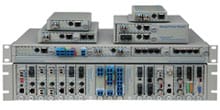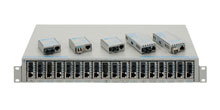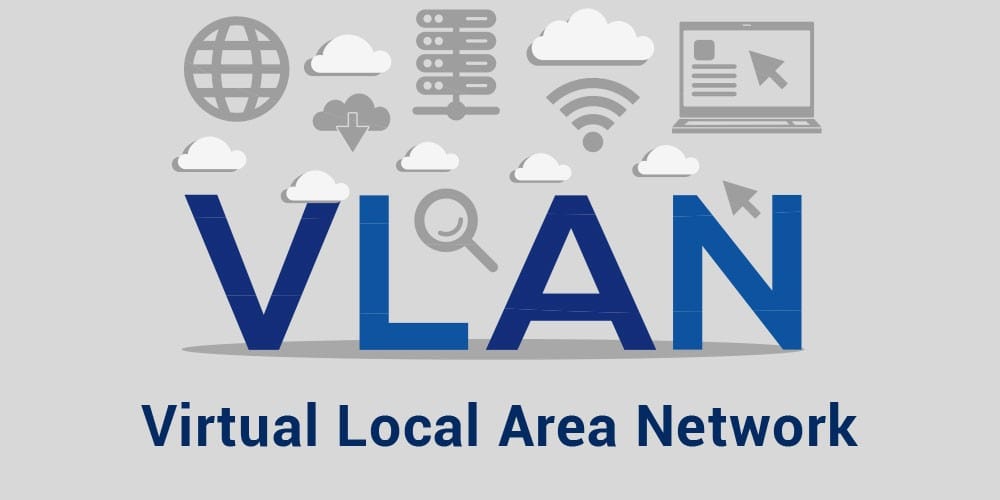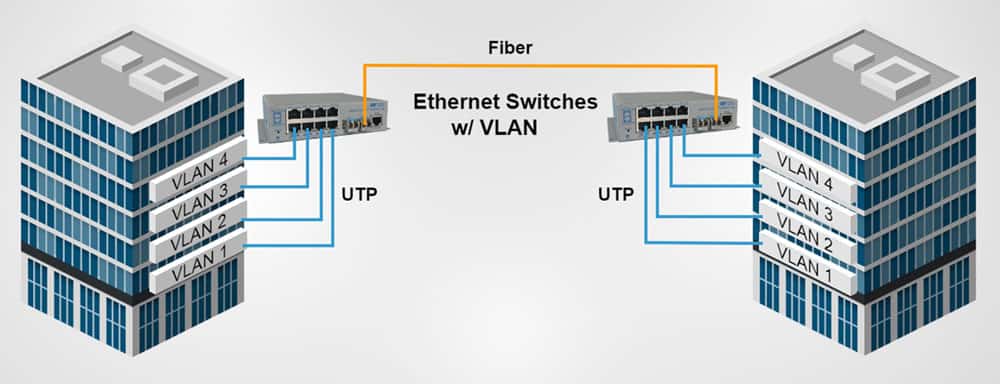- Products
- PoE Media Converters and Switches
- Ethernet & PoE Switches Product Selector
- Multi-Gigabit Ethernet and PoE Switches
- PoE PSE Commercial Switches
- PoE PSE Industrial Fiber Switches
- PoE Industrial Copper Extenders
- PoE Powered Media Converters
- PoE PSE Media Converters
- PoE Extenders & Injectors Product Selector
- Pluggable Transceivers Product Selector
- Single Pair PoE Products
- Product Lines

- iConverter Managed Multi-service Platform
- Copper to Fiber Media Converters
- Ethernet Media Converters
- 10 Gigabit Copper-to-Fiber
- 10/100/1000 Copper to 10 Gigabit Fiber
- 10/100/1000 Copper-to-Fiber with Integrated Management
- 10/100/1000 Industrial Copper-to-Fiber with Integrated Management
- 10/100/1000 Copper-to-Fiber with VLAN
- 10/100/1000 Dual Media Converter with VLAN
- Gigabit Copper-to-Fiber
- 10/100 Copper-to-Fiber with Integrated Management
- 10/100 Industrial Copper-to-Fiber with Integrated Management
- 10/100 Copper-to-Fiber with VLAN
- 10/100 Copper-to-Fiber
- Fast Ethernet Copper-to-Fiber
- Fast Ethernet Redundant Links
- 10Mbps Copper-to-Fiber
- 10Mbps Copper to Coax
- TDM Media Converters
- Serial Media Converters
- Ethernet Media Converters
- Fiber to Fiber Media Converters
- 10 Gigabit Fiber-to-Fiber Converter and Transponder
- 10 Gigabit Industrial Converter and Transponder
- SFP-to-SFP Fiber Converter and Transponder
- SFP-to-SFP Industrial Fiber Converter and Transponder
- Gigabit Fiber to-Fiber with 3 Rs
- 100/1000 Fiber-to-Fiber with 3 Rs
- Gigabit Fiber-to-Fiber
- Fast Ethernet Fiber-to-Fiber with 3 Rs
- Fast Ethernet Fiber-to-Fiber
- OC-3/STM-1 Fiber-to-Fiber
- OC-12/STM-4 Fiber-to-Fiber
- Carrier Ethernet Network Interface Devices
- CE 2.0 - 10G Demarcation NID
- CE 2.0 - 10/100/1000 Mult-port NID
- CE 2.0 - 10/100/1000 Mult-port NID with PoE
- CE 2.0 - 10/100/1000 8-Port NID
- CE 1.0 Service OAM - 10/100/1000 NID
- CE 1.0 Link OAM - 10/100/1000 Copper-to-Fiber NID
- CE 1.0 Link OAM - 10/100 Copper-to-Fiber NID
- CE 1.0 Link OAM - Gigabit Fiber-to-Fiber NID
- CE 1.0 Link OAM - Fast Ethernet Fiber-to-Fiber NID
- CWDM Multiplexers
- T1/E1 Multiplexers
- Ethernet Switch Modules
- Management System
- Chassis Options

- 1-Module Industrial Chassis

- RuggedNet Industrial Switches and Extenders
- Industrial PoE PSE Fiber Switches
- Multi-Gigabit Managed Industrial PoE+/BT Switches
- Multi-Gigabit Unmanaged Industrial PoE+/BT Switches
- 10G Managed 802.3bt PoE Switches
- 10G Unmanaged 802.3bt PoE Switches
- 10G Managed PoE+ Switches
- 10G Unmanaged PoE+ Switches
- 1G Managed PoE+ Switches
- 1G Unmanaged PoE+ Switches
- 1G Unmanaged 802.3bt PoE Switches
- 1G Managed 802.3bt PoE Switches
- Industrial SPE Switches
- Industrial Ethernet Switches
- Industrial PoE Copper Extenders
- Industrial Power Supplies

- OmniConverter Media Converter, Switches and Extenders
- PoE PSE Media Converters
- 10G Multi-Gigabit / Multi-Rate PoE Media Converter
- 10G Multi-Gigabit / Multi-Rate Media Converter
- 10/100 Multi-port PoE+ Media Converter
- 10/100 PoE+ Media Converter
- 10/100/1000 Multi-Port PoE+ Media Converter
- Industrial 10/100/1000 Multi-Port PoE+ Media Converter
- 10/100/1000 PoE+ Media Converter
- 10/100/1000 PoE++ 60W-100W Media Converter
- Industrial 10/100 Multi-port PoE+ Media Converter
- 1U Rack-Mount Shelf
- PoE PSE Compact Switches
- Multi-Gigabit Managed PoE+/BT Switches
- Multi-Gigabit Unmanaged PoE+/BT Switches
- 10G Managed 802.3bt PoE Switches
- 10G Unmanaged 802.3bt PoE Switches
- 10G Managed PoE+ Switches
- 10G Unmanaged PoE+ Switches
- 1G Managed PoE+ Switches
- 1G Unmanaged PoE+ Switches
- 1G Managed 802.3bt PoE Switches
- 1G Unmanaged 802.3bt PoE Switches
- Ethernet Switches
- Single Pair Ethernet (SPE)
- PoE Copper Extenders
- PoE Injectors

- miConverter Unmanaged Miniature Media Converters
- 10/100/1000 Copper-to-Fiber
- Industrial 10/100/1000 Copper-to-Fiber
- 10/100/1000 Ultra-Compact Copper-to-Fiber
- Gigabit Copper-to-Fiber
- 10/100/1000 Copper-to-Fiber PoE Powered
- 10/100 Copper-to-Fiber
- 10/100 Ultra-Compact Copper-to-Fiber
- 10/100 Copper-to-Fiber PoE Powered
- 18-Module Chassis
- Industrial 10/100 Copper-to-Fiber PoE Powered

- FlexSwitch Compact Switches
- Solutions
- Company
- Support
- How to Buy
What is a VLAN (Virtual LAN), and how does it work?

Virtual LANs (VLANs) have emerged as a crucial tool for enhancing network efficiency, security, and scalability in modern computer networking. A VLAN allows you to logically segment a physical network into multiple isolated networks, even though the devices may be physically connected to the same network infrastructure. This comprehensive guide will delve into the technical intricacies of VLANs, how they work, their benefits, types, configuration, and potential security concerns.
What is a VLAN?
A VLAN (Virtual LAN) is a logical network segment within a physical network created to group devices based on functional requirements, regardless of their physical location. VLANs improve network management, reduce broadcast domains, optimize traffic flow, and enhance security.
VLAN Application Example

This network diagram above illustrates the VLAN (Virtual Local Area Network) setup between two connected buildings.
A single-mode fiber optic cable establishes the connection, linking the network infrastructure of both buildings. At each building, an OmniConverter Ethernet switch that supports VLANs serves as the central networking hub.
Within each building, VLANs 1 - 4 have been deployed, enhancing network segmentation and isolation to different departments or tenants within the building. These VLANs are connected to the respective Ethernet switches via UTP (Unshielded Twisted Pair) copper cabling, ensuring efficient and reliable communication between devices within each VLAN.
This configuration optimizes network performance, enhances security, and enables efficient management of traffic flow between various departments or functional areas within the interconnected buildings.
Different types of VLANs
Let's delve into various types of VLANs, shedding light on their distinct characteristics, benefits, and use cases.
Data VLAN
Data VLANs are the most common type of VLANs. They segregate user data traffic based on different departments, projects, or user groups within an organization. This segmentation enhances network security, improves bandwidth allocation, and streamlines network management by categorizing devices into logical groups.
Port-based VLANs
Port-based VLANs allocate specific switch ports to separate VLANs. Each port has a unique VLAN assigned to it, ensuring that devices connected to those ports belong to the same logical network. This segmentation is particularly useful when devices with similar networking requirements must be isolated for security or performance reasons. For instance, research and development department devices can be placed in a separate VLAN to prevent unauthorized access.
Tag-based VLANs (802.1Q)
Tag-based VLANs, also known as IEEE 802.1Q VLANs, employ VLAN tagging to differentiate between VLANs. This approach adds a VLAN tag to the Ethernet frame, indicating the VLAN to which the frame belongs. This enables the network switch to route traffic to the appropriate VLAN efficiently. Tag-Based VLANs are highly flexible and allow more efficient utilization of network resources, making them ideal for environments with a dynamic and diverse range of devices.
Protocol-based VLANs
Protocol-based VLANs involve grouping devices based on the network protocol they use. This type of VLAN segmentation can be particularly beneficial in scenarios where specific network services or applications need to be isolated from the rest of the network. For instance, HTTP and FTP traffic can be placed in one VLAN, while VoIP traffic resides in another.
Voice VLANs
Voice VLANs are designed specifically for VoIP traffic. They prioritize voice data, ensuring minimal latency and optimal call quality. Voice VLANs contribute to a seamless communication experience by segregating VoIP traffic from other data types. This type of VLAN is commonly used in organizations that heavily rely on VoIP systems for their daily operations.
Management VLANs
Management VLANs are dedicated to network management tasks. They separate network management traffic from user data traffic, such as configuration and monitoring data. By isolating management traffic, network administrators can ensure that critical management operations remain unaffected by user activities, improving network stability and security.
Native VLAN
The Native VLAN is a crucial aspect of VLAN configuration, particularly in VLAN trunking. The VLAN carries all untagged traffic between switches in a trunk link. Configuring the Native VLAN correctly is essential for maintaining consistent communication between switches and preventing potential security vulnerabilities.
How does VLAN work?
VLANs operate at the OSI model's Layer 2 (Data Link Layer). Devices within the same VLAN can communicate as if they are on the same physical network, even if they are located in different parts of the network infrastructure.
To accomplish this, VLANs use a process called frame tagging. A tag is added to the Ethernet frame when data is sent between devices in a VLAN. This tag contains information about the VLAN to which the frame belongs. Switches use these tags to forward the frame only to the devices within the same VLAN, ensuring efficient and isolated communication.
Benefits of VLAN implementation
-
Enhanced network security
Network administrators can establish stronger security boundaries by segregating devices into different VLANs. Devices in one VLAN are isolated from devices in another VLAN, reducing the risk of unauthorized access and potential breaches.
-
Improved network performance
VLANs can help optimize network traffic by ensuring data is only sent where needed. This leads to reduced congestion and improved overall network performance.
-
Simplified network management
Managing a large, flat network can be challenging. VLANs simplify network administration by allowing administrators to logically group devices based on their functions or departments, making applying network-wide configurations and updates easier.
Conclusion
In conclusion, Virtual Local Area Networks (VLANs) have emerged as a pivotal tool in modern networking, offering enhanced control over network traffic, improved data security, and efficient resource utilization. VLANs optimize network performance by segmenting a physical network into logical segments and pave the way for more secure and organized data communication. As businesses rely on interconnected systems, understanding VLANs and their operational mechanisms is crucial for staying at the forefront of network optimization and security.
If you have any future questions, contact Omnitron systems, we are available 24/7 to answer your questions. Call us now!
FAQs
1. Why use VLAN instead of a router?
VLANs offer advantages over routers in terms of network segmentation and resource optimization. While routers divide networks at the IP level, VLANs operate at the data link layer, allowing for more granular control over traffic and data segregation without additional physical devices.
2. What are the three main benefits of using a VLAN?
The three primary benefits of using VLANs are enhanced network performance through reduced congestion and data collisions, improved security by isolating sensitive data and controlling access, and simplified network management, enabling easier updates and configurations for specific network segments.
3. Is a VLAN on a router or switch?
VLANs can be configured on both routers and switches. However, switches are more commonly associated with VLANs due to their ability to segment network traffic based on switch ports, making them a fundamental component for VLAN implementation.
4. What is the purpose of a VLAN?
The purpose of a VLAN is to logically segment a network into isolated groups, enhancing data security, optimizing network performance, and facilitating efficient resource allocation. VLANs enable devices to communicate as if they were on the same network, even if they are physically dispersed across various locations.
5. How many VLANs can you have on a switch?
The number of VLANs a switch can support depends on the switch model and its capabilities. Modern switches can support thousands of VLANs, allowing for extensive network segmentation and management.
6. What is the difference between a VLAN and a subnet?
A VLAN operates at the data link layer (Layer 2), segmenting network traffic. In contrast, a subnet operates at the network layer (Layer 3) and divides IP addresses into logical groups for routing purposes. VLANs enable device isolation and traffic control, while subnets facilitate IP address management and routing.
7. Can a port have 2 VLANs?
Yes, a port on a switch can be configured to belong to multiple VLANs. This is known as a "trunk port" or "tagged port." Trunk ports carry traffic for multiple VLANs, allowing efficient communication between network segments.









